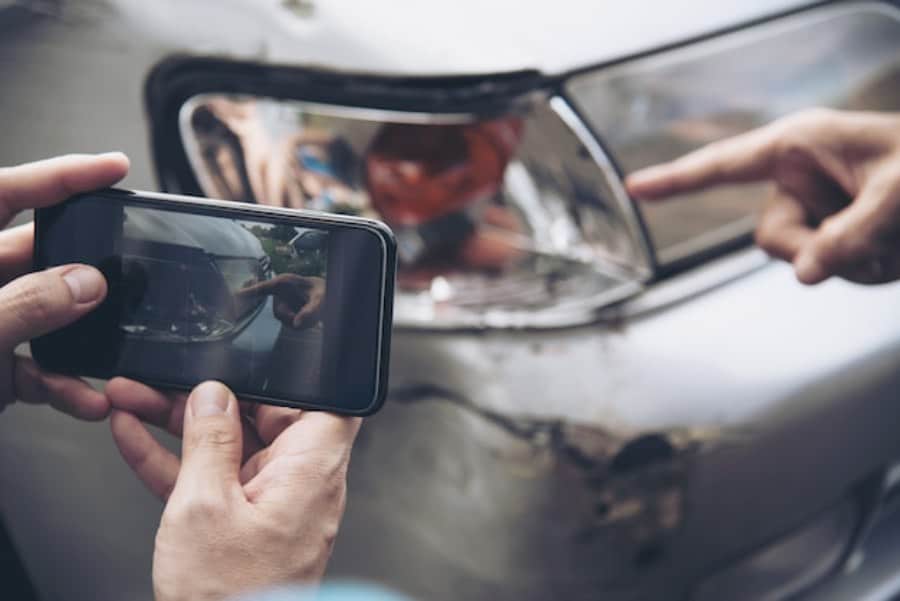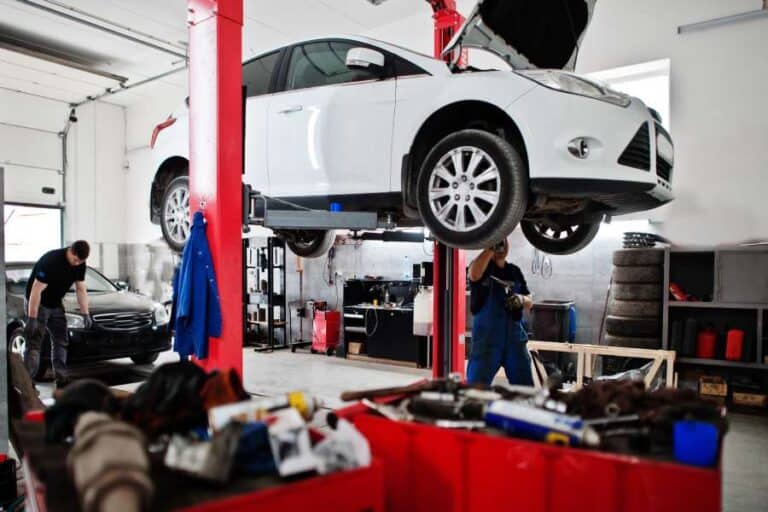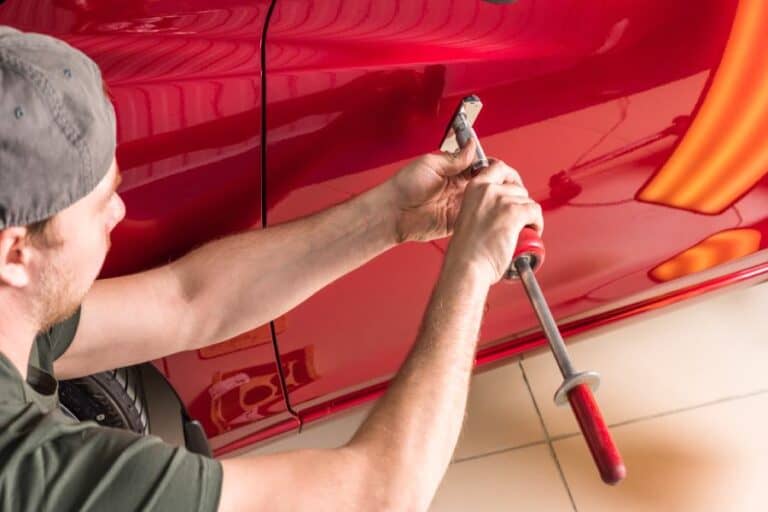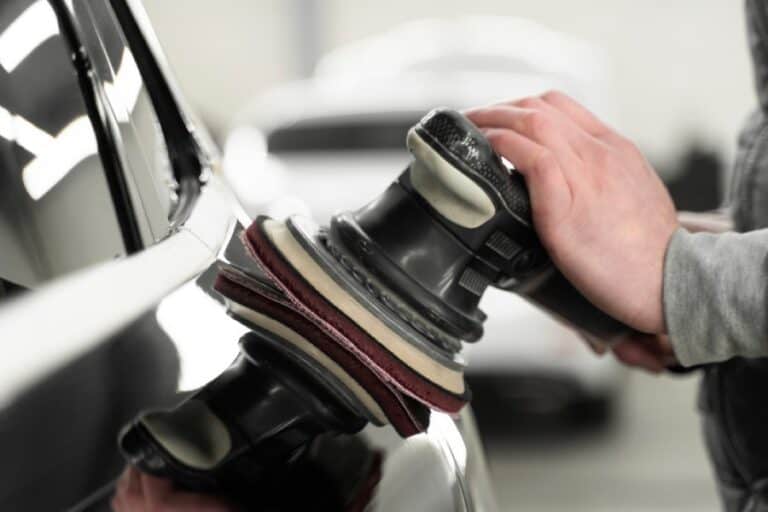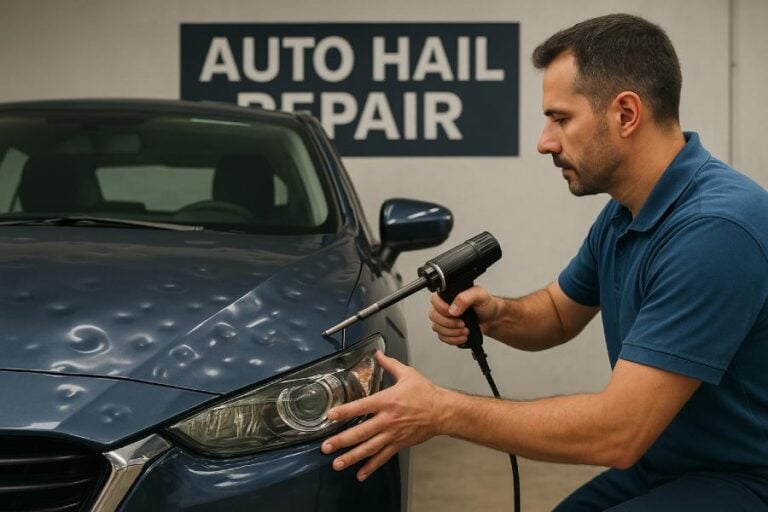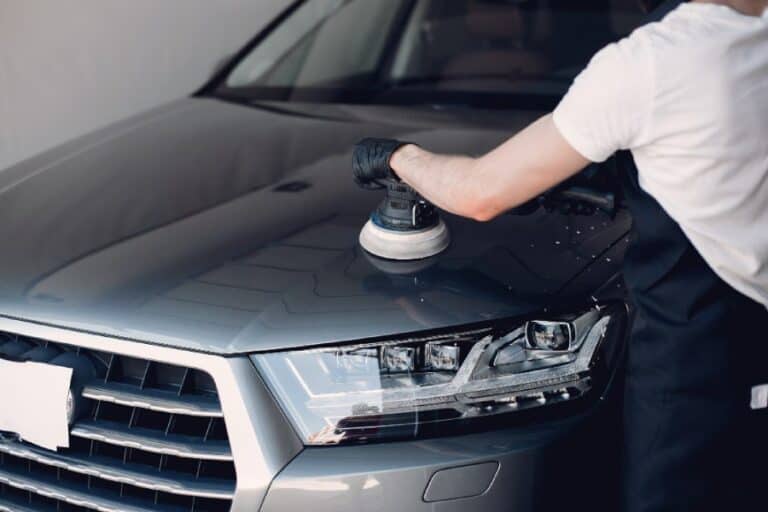Essential Steps In Collision Repair: Restoring Your Vehicle’s Safety And Appearance
Experiencing a vehicle collision can be a stressful event, but understanding the collision repair process can help alleviate some of that anxiety. Collision repair is not just about restoring the aesthetics of your vehicle but also ensuring its safety and functionality. This comprehensive guide outlines the essential steps in collision repair, helping you navigate the process effectively.
Initial Assessment and Inspection
The initial stage of repairing a collision involves a comprehensive evaluation and examination of the damage. This step is essential for recognizing all affected areas and assessing the level of repairs necessary.
Visual Inspection
An examination is performed to evaluate the visible damage, such as dents, scratches, and paint problems. This assessment aids in grasping the total effect of the collision on the vehicle’s outer appearance.
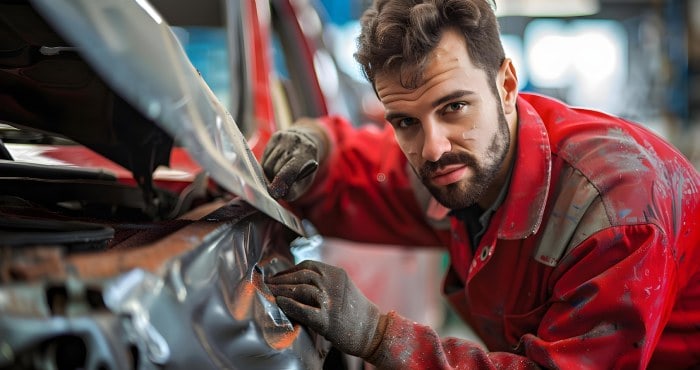
Structural Inspection
A thorough examination emphasizes the integrity of the vehicle’s framework. This involves assessing for any damage to the frame, misalignment issues, and potential weaknesses in structural parts. Contemporary auto repair facilities utilize cutting-edge diagnostic equipment and laser measurement technology to guarantee precise evaluations.
Estimate Preparation
After evaluating the extent of the damage, a comprehensive estimate for repairs is created. This estimate outlines expenses related to parts, labor, and any extra services needed. It’s important to examine the estimate thoroughly and address any questions with the repair shop to guarantee clarity and precision.
Disassembly and Cleaning
Once the preliminary evaluation and cost estimation are complete, the next phase involves taking apart the components and cleaning them. This stage is essential for reaching the affected areas and getting them ready for restoration.
- Vehicle Disassembly: Disassembly entails taking out broken components to reach the structures beneath. This process might require detaching bumpers, fenders, and various exterior elements. It is crucial to handle and store the removed parts correctly to prevent any additional damage.
- Cleaning and Preparation: After the vehicle has been taken apart, the affected sections are thoroughly cleaned to eliminate any dirt, debris, and leftover substances. This cleaning step is crucial as it provides a clean surface for repairs and repainting, resulting in improved adhesion and a superior finish.
- Structural Repairs: Structural repairs play an essential role in collision repair, focusing on restoring any harm done to the vehicle’s framework or structural elements.
- Frame Alignment: Frame alignment is the process of utilizing specialized tools to rectify any discrepancies in the vehicle’s frame. This procedure is essential for restoring the vehicle’s structural integrity to its original standards, which is vital for ensuring both safety and optimal performance.
- Welding and Metal Repair: When the frame or structural parts sustain damage, techniques such as welding and metal repair are employed to fix them. Experienced technicians carry out these repairs to guarantee that the vehicle’s structural integrity remains intact.
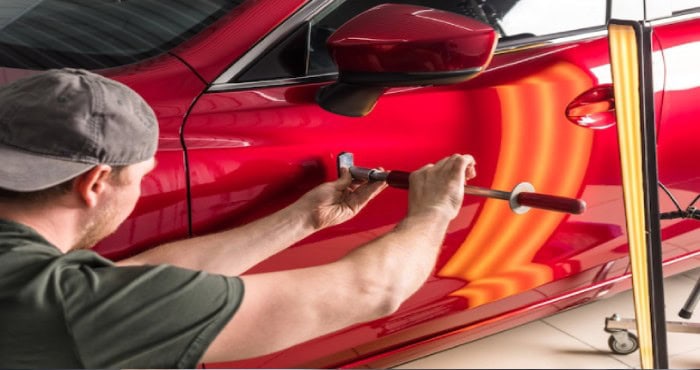
Body Repairs
Once the structural problems have been resolved, attention turns to repairing the body, which entails mending the damage to the vehicle’s exterior.
Dent Removal
Methods for removing dents, including paintless dent repair (PDR) and conventional techniques, are employed to fix any imperfections like dents or dings. PDR is typically favored for small dents because it eliminates the need for repainting, thereby maintaining the vehicle’s original finish.
Panel Replacement and Repair
Should the panels sustain significant damage, replacement might be required. However, if repairs can be carried out, technicians will undertake the necessary fixes and make sure that the panels are correctly aligned. This process is essential for obtaining a flawless look.
Painting and Refinishing
To restore a vehicle’s look and safeguard it against environmental harm, painting and refinishing are crucial processes.
Color Matching
Color matching requires mixing the new paint with the current hue to create a consistent appearance. Sophisticated color-matching technology is employed to guarantee a precise match, allowing the repaired sections to integrate smoothly with the overall look of the vehicle.
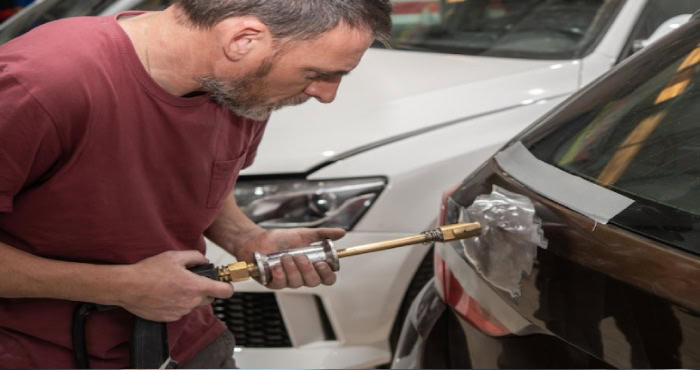
Painting Process
Typically, the process of painting consists of multiple layers, such as primer, base coat, and clear coat. Each layer is meticulously applied and given time to dry before adding the subsequent layer. This method guarantees a robust and superior finish.
Clear Coat Application
The clear coat acts as a shield for the paint, boosting its resilience and shine. Additionally, it safeguards the paint against harmful UV radiation and pollutants from the environment.
Reassembly and Quality Check
Once the painting and refinishing process is finished, the vehicle is put back together and subjected to a comprehensive quality inspection.
- Reassembly: When putting everything back together, all the disassembled parts and components are meticulously reattached. This process involves aligning and fastening the pieces to guarantee that the vehicle is returned to its original state.
- Quality Inspection: A concluding quality check is performed to verify that all repairs adhere to the necessary standards. This assessment involves examining alignment, paint quality, and the vehicle’s overall look. Any problems discovered during this stage are resolved before handing the vehicle back to its owner.
- Final Steps: Before returning the vehicle to its owner, several concluding procedures are completed to confirm that everything is satisfactory.
- Test Drive: A test drive is conducted to confirm that the vehicle functions properly and that all repairs have been effective. This process ensures that the vehicle’s handling, braking, and overall performance are back to normal.
- Documentation and Handover: In conclusion, the vehicle owner receives all relevant repair documents, such as invoices and warranty details. Additionally, a comprehensive overview of the repairs completed and suggestions for future maintenance are provided to keep the owner well-informed.
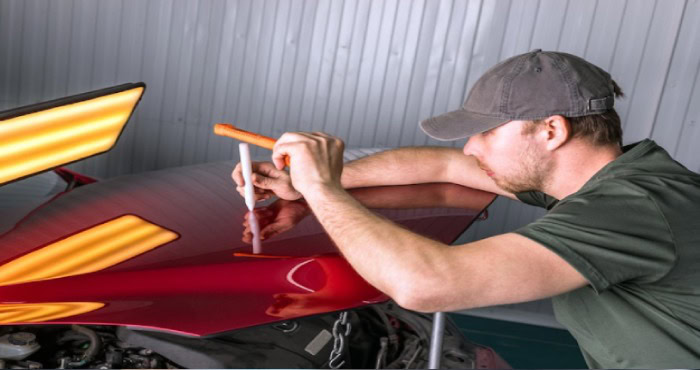
The process of repairing a vehicle after a collision involves several important stages, including thorough evaluation, structural and bodywork repairs, painting, and putting everything back together. Every phase plays a vital role in restoring the vehicle’s safety, performance, and aesthetics.
Familiarizing yourself with these key steps can help you manage the collision repair journey more efficiently and guarantee that your vehicle is returned in excellent shape. If you have any doubts or inquiries during the process, feel free to reach out to your repair shop for a seamless and positive experience.

